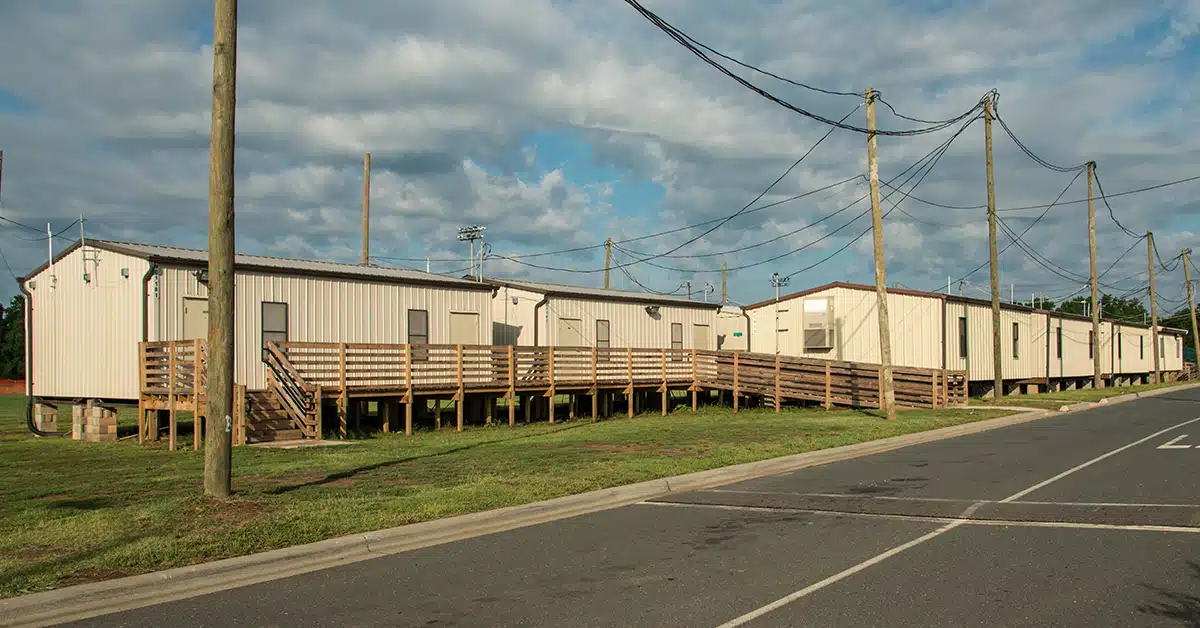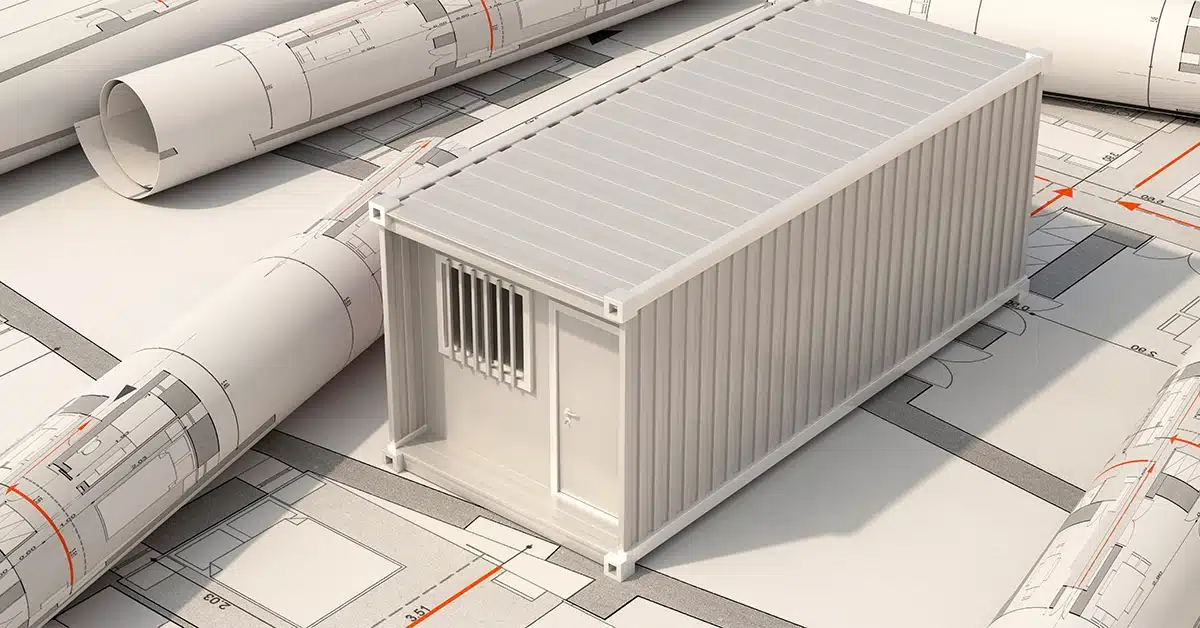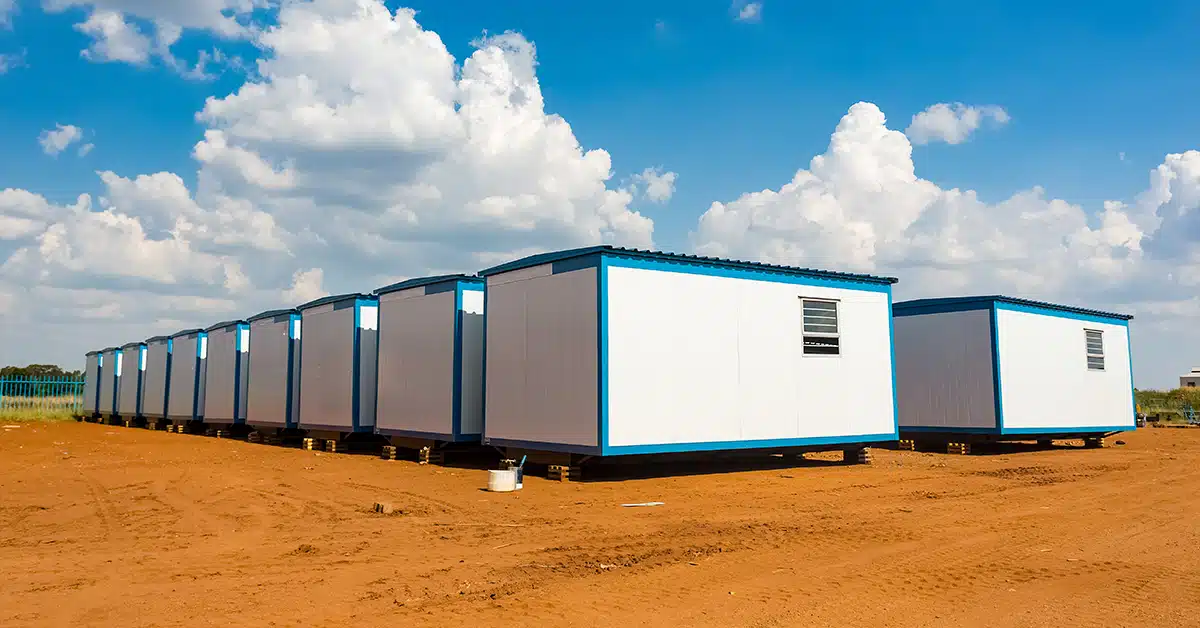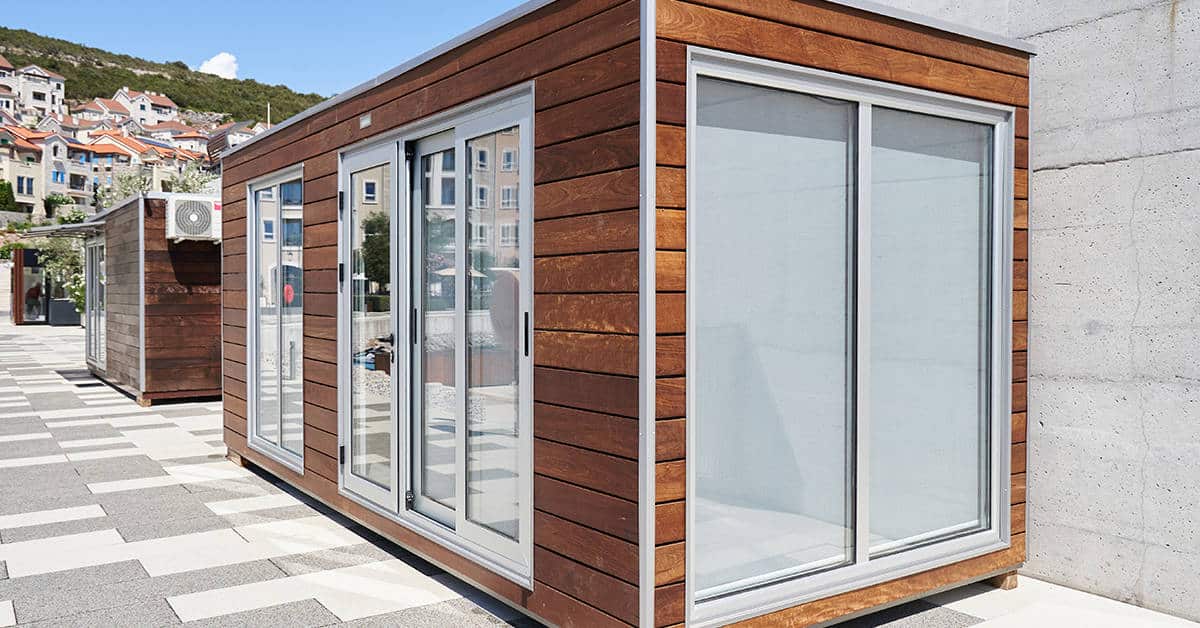Modular Classroom Defined
At its core, a modular classroom is just a building that has already been put together and is sold to school districts for use as classroom space. They can be used as permanent or temporary classrooms. They can also be used in other settings, such as industrial settings, military bases, and disaster zones.
Commonly called “portable” in many school districts, a modular classroom can be much more than just an extra classroom space. These classrooms can also be put on a foundation for a permanent installation, used as an addition to an existing structure, or even put together to build a new school entirely.
Purpose
At its core, the purpose of a modular classroom is to provide space, and there are many reasons why a school district may elect to use modular classrooms. Most commonly, their student body is growing, and these classrooms can be a quick and cost-effective way to add classroom space to an existing school, either permanently or as a band-aid until they can put together a more long-term solution.
Temporary classes
A district may be in the process of building a new school, and the project is taking longer than initially anticipated. Modular classrooms can be brought in to be used for one school year or even just part of a school year until the new building is completed.
There may be a temporary influx of new students that need to be accommodated. For instance, when Boeing had to ground all of its 737 Max passenger airplanes a few years ago, there was a great influx of employees in the areas where they were stored, as those planes had to be maintained and repaired. That project took almost 2 years total, spread across 3 school years, and those districts had to accommodate the children of those Boeing employees.
Another example is temporary military training and relocation, especially when testing new equipment, as this generally happens in areas without existing military bases. When a member gets transferred to a stateside location for more than a few months, their family also goes with them, bringing their children into the school district.
Long-term “temporary” situations
Longer-term “temporary” situations also happen. There may be a factory in an area that is prone to shutting down operations now and then. When they are active, they bring several hundred families to a region; however, when funding or demand for the product dries up, many of those families leave; and when the factory reopens in a year or two, there is another influx of families.
Regular partial-year influxes of students also happen in certain regions that are agriculture-heavy. People immigrate to work in fields and help with the harvest season, and they bring their families with them. Their younger children become students in their local school district, causing a higher headcount in the spring and fall terms. In the middle of the year, the schools may operate within their designed capacity, but in those 3–4 months of the year, they may be well over capacity.
Lack of school real estate
Further, there are many situations in which a district may not be in a position to build a new school even if its permanent population has outgrown its facilities. Perhaps their voters turned down a bond, so they do not have the funds. In this situation, adding modular classrooms to existing schools in the district can be a bandaid fix for a few years until they can re-run a bond proposal or even a longer-term solution if they cannot find a way to pay for a new school.
Sometimes usable real estate is just not available in an area, so building a brand new school is simply not possible. When this happens, putting modular classrooms in a permanent place is a great way to add much-needed classroom space.
The demand for smaller classes
Another reason a district might opt to add modular classrooms throughout its district is to lower its overall class sizes. Students learn better in smaller classes, which can lead to higher test scores and, in the end, more money for the district to use for more services for their students. Smaller class sizes may also prove to be more cost-efficient, as teachers are contracted to teach a certain class size and must be compensated per day for each child over that count.
Some collective bargaining agreements require compensation of upwards of $25-30 per student per day, and in especially high-density districts, this adds up quickly. As an example, if a school currently has 2 classrooms with 60 students total, it may be more beneficial all around to split those students into 3 classrooms of 20 students each, and they would need an extra classroom to make that happen.
Uses
There are many uses for modular classrooms that go well beyond the scope of simple classroom space.
Stand-alone classrooms and labs
Modular classrooms can be utilized to upgrade office space in a district. Some districts focus heavily on improving their schools, and their administration buildings are often neglected. When modular classrooms are brought in, they can be used as meeting rooms or even as extra offices for different departments.
These structures can also be used as stand-alone laboratory spaces. Whether it’s a computer lab that needs extra security or a chemistry lab that needs to be climate-controlled and separate from the main school building, a modular classroom is an excellent solution.
Extra spaces
With a growing student body comes the need for additional dining spaces and other communal spaces within a school. A modular classroom can be added to an already-existing dining hall or kitchen to make much-needed space in a small area.
With the skyrocketing cost of housing, more students are turning toward dorm living, and some universities are even utilizing these modular classrooms as dormitories. They can be built out in much the same fashion as a traditional dormitory, with built-in furniture and layouts that are optimized to use every inch of space, and the rooms are spacious enough for multiple residents.
Reasons to Choose Modular Classrooms
There are many reasons why someone might choose to build a modular classroom instead of a traditional one.
Portability
Because they are manufactured off-site and transported to the location where they will be used, modular classroom assembly does not involve a cluttered and potentially dangerous long-term construction site on your school campuses. They can be set up in as little as a weekend for temporary use, or a few weeks over a seasonal break for a permanent installation. Because it is quick and relatively mess-free in nature, assembly can also be done while school is in session with very little interference to the overall operations of the school.
Flexibility
Modular classrooms allow for a great deal of flexibility. They can be moved as needed and customized with multiple or individual rooms, architectural details, built-in storage, HVAC, water, sewer, security, and solar panels. Modular classrooms can be used in many different ways and are easy to set up. They usually come in standard sizes and can be put together like building blocks to make classrooms, offices, bathrooms, or even dorms on campuses where more space is needed.
A cost-effective solution
Also worth noting is that since modular classrooms are pre-manufactured, projects are not likely to go over budget. Almost always, the cost the district pays for a job is the same as what was bid at the beginning, so there are no surprises. With inflation ever upon us, this is especially important. The building is already constructed when it is purchased and the overall assembly time is short, so modular classrooms are not vulnerable to inflation once contracted.
Eco-friendly
It has also been found that modular buildings are better for the environment and make less waste in the long run than traditionally built structures, which make more than twice as much solid waste during construction. These buildings use less energy due to their compact size and modern insulation. A study in Japan found that the energy savings between a modular and a traditional building was enough to mitigate the carbon debt from the construction process in as little as six years.
Better ventilation
Air quality in a modular classroom can be better than in a traditional classroom because they utilize modern ventilation techniques and do not recirculate air throughout an entire school’s heating and cooling system. This could make it so that students who learn in modular classrooms get sick less often in the long run. The Environmental Protection Agency of the United States has also said that when air quality gets better, students do better in school, as shown by their better scores on standardized tests.
Cost Comparison
The cost of a modular classroom is approximately $40–200 per square foot, depending on finishes and features. Compared to the low-end estimate of about $300 per square foot to build a traditional school building, this is a big savings.
All costs, like delivery, lease, and removal, for a basic pre-made and temporary modular classroom setup can be well under $100,000. Most of the time, the classrooms can be ready for full occupancy and use at a site 90 days after the first consultation. A lease can be as little as $20-50,000 per year. This makes it an excellent stop-gap measure in most circumstances.
Conclusion
Modular classrooms have many uses, and they may prove to be the best solution for a space problem a district finds itself dealing with!






